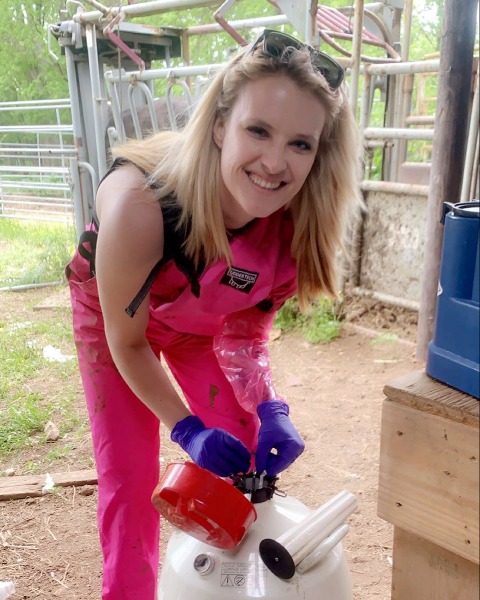Session: SSASAS: Extension I
379 - Case Study: On-farm Demonstration for the Impact of Applied Reproductive Technologies
Saturday, July 17, 2021
11:15 AM – 11:30 AM EST
Location: Kentucky International Convention Center (KICC), M109 & 110

Courtnie L. Carter
Beef Programs Coordinator
University of Tennessee- Knoxville
Spring Hill, Tennessee.jpg)
Justin D. Rhinehart, PhD
Professor; Extension Beef Cattle Reproduction Specialist
University of Tennessee
Knoxville, Tennessee
Presenting Author(s)
Author(s)
Demonstrating the implementation of, and results from, applied management technologies on privately held farms is an essential method for Extension educators. A commercial cow/calf herd, for which the management was being transitioned to a younger family member, was used for this multi-year demonstration. Beginning summer 2019, the cow herd was inventoried and evaluated, and a plan was put in place to improve profitability through enhanced reproductive management. Initial evaluation showed an overall pregnancy rate of 75.6% with a 153 d calving season for cows and breeding age heifers (n = 209). Non-pregnant and un-sound cattle were sold (n = 56). The average initial BCS was a 4.5 (1 to 9 scale). Estrus synchronization for natural service was utilized in the first breeding season (Fall 2019) to condense the subsequent calving season. Melengestrol acetate (MGA) was fed at a rate of 0.5 mg/head/d for 7 d and bulls introduced on he last day MGA was fed. Also in year 1, timed artificial Insemination was used to breed purchased (n = 37) and home raised (n = 18) replacement heifers. A group of pregnant cows ranging in age from 5 to 8 years (n = 47) were also purchased in year 1. Ultrasonography was used to detect pregnancy and estimate calving date on 30 d post AI, and 30 d post bull removal. Year 2 pregnancy rate was 93% for heifers and 88% for cows with a 131 d estimated calving interval for all cows and heifers (n = 255), with 94% expected to calve in the first 90 days. In summary, while it is difficult to eliminate year-over-year variables, a combination of culling strategy and estrus synchronization for both natural service and AI resulted in an increased proportion of cows and heifers calving earlier in the calving season, which is expected to improve marketing potential and profitability of the resulting calf crop. Condensing the calving interval provides opportunity to introduce additional reproductive management practices. Results from this demonstration will be incorporated into Extension educational curricula.

.jpg)
.jpg)
.jpg)
.jpg)
.png)
.png)